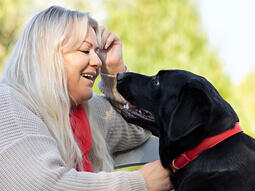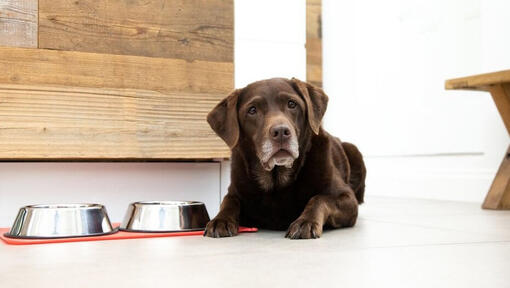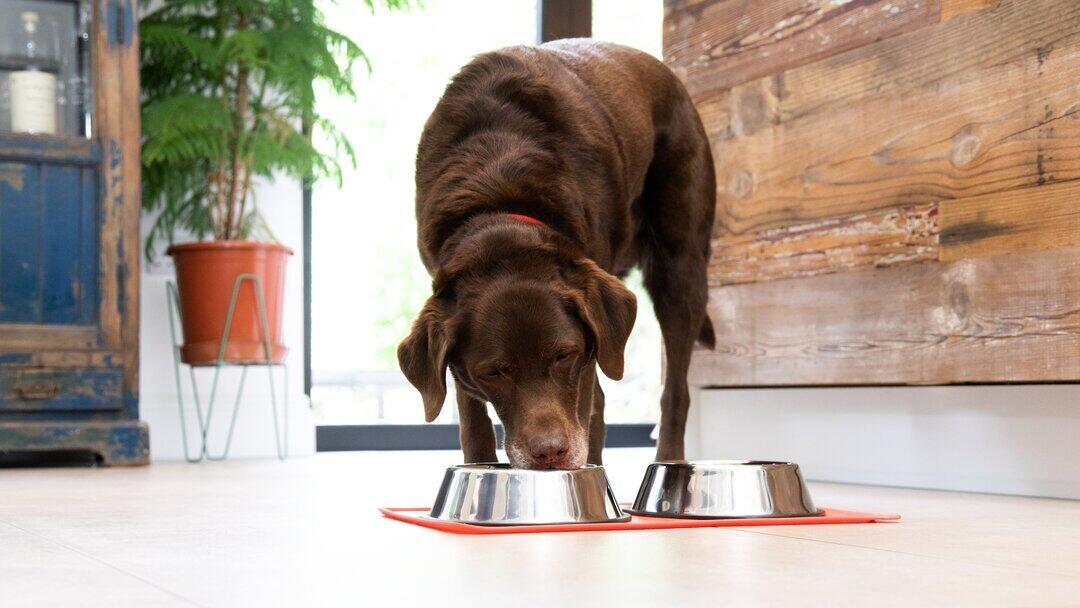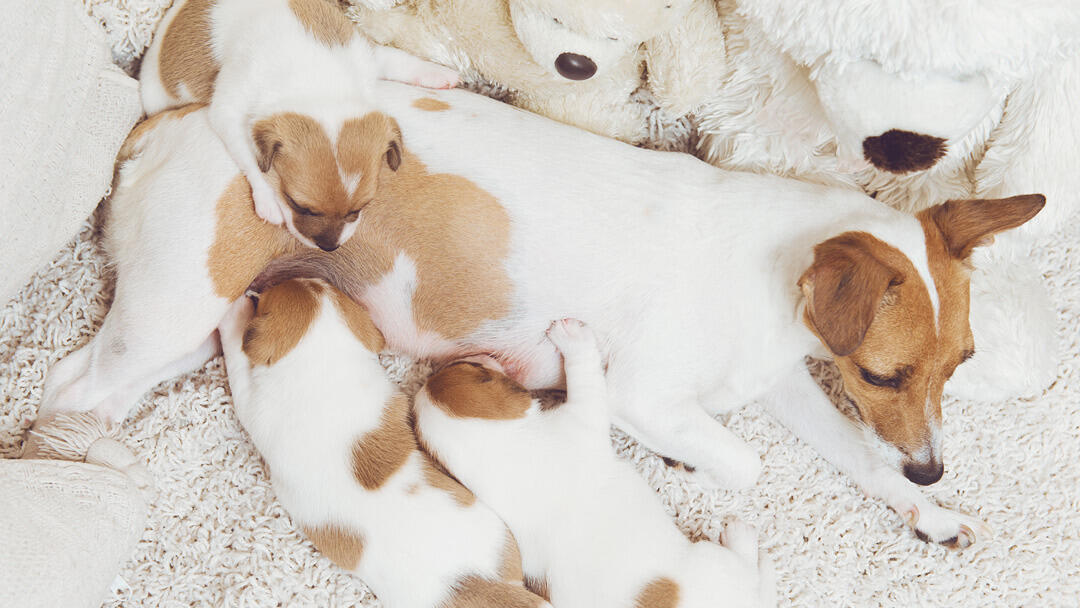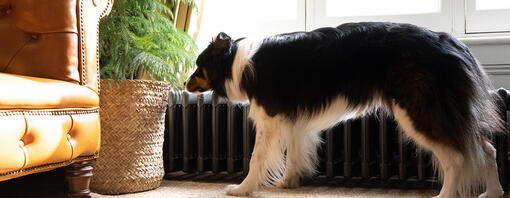
After months, sometimes years, of planning the perfect breeding, we can’t think of anything more exciting than finding out your dog is expecting! As dog pregnancy only last for around 2 months, you can look forward to bundles of fur filling your home very soon!
When your dog is pregnant, you may find yourself wondering “what happens when dogs give birth?”. You don’t have to panic as the due date approaches - dog labours are usually much less dramatic than ours, and your pet should be able to bring her puppies into the world without any worries. Mum should be more than capable, but she will need you there during labour for support and in case of any complications.
Speak to your vet if you have any concerns about pregnancy in dogs or about your dog giving birth. Their advice should help to put your mind at rest. Here are some helpful tips from our PetCare Team to help you be as prepared as possible for when your pet becomes a new mum.
How to prepare your dog for the birth
From learning how to build a nest to knowing what equipment to keep on standby, we’ve listed how to prepare your dog for labour below. Your dog’s labour should go smoothly, but it’s useful to have help on hand to keep them calm and in case your dog runs into any complications.
Knowing your dog's due date
As we mentioned, dog pregnancies only last 2 months (or around 63 days) – it can feel like a bit of a whirlwind! After a successful mating and you begin to see signs that she may be pregnant, it’s important to get her checked out to be sure and work out when you can expect to hear the patter of tiny paws.
You may want to have your bitch scanned to see how many puppies she is carrying – if so, discuss this with your vet.
As it gets closer to the time, you can be prepared by doing the next steps:
Build a nest for dog labour
Mum will want a private place in your home where they can relax and give birth to the puppies in peace, so build a ‘nest’ in the last two weeks of your dog’s pregnancy.
A puppy pen is ideal as this will provide a safe space after the puppies are born – but giving her somewhere comfortable and ‘safe’ within that is important. An ideal nest for dogs giving birth is a large cardboard box lined with puppy pads (in case of accidents), and filled with clean blankets, sheets or towels. Make sure the box is big enough for both mum and the litter to fit comfortably inside. If you have a large breed dog, you might struggle to find a box big enough, but you can still create a safe space inside the pen using blankets, towels and maybe even a cheap dog bed as long as it doesn’t have sharp hard edges.
Place the nest in a quiet spot at room temperature, where they won’t be disturbed and can stay cosy. Adding your dog's own bedding or toys to the nest (as long as they are clean) can encourage your expectant mum to use it and will make her feel at home before the birth.
Often your dog will choose where she wants to be herself – and it might be a case of you building her nest in the place she is comfortable.
Keep your vet’s out-of-hours phone number on hand
Get hold of your vet's out-of-hours phone number prior to your dog giving birth, as delivery often happens during the night. Let your vet know your dog’s due date (if they don’t know already), so they know when to be on stand-by. If mum does have problems delivering the puppies you may need to take them into the vet, so make sure that you have access to transport.
10 signs of dog labour to look out for
When your dog is in labour, you’ll likely notice a drop in their temperature, restlessness, panting, nesting behaviour, shivering and more. There are different stages to their labour but we have more details on this below to help you out.
1. Drop in temperature
Your dog’s temperature is one of the early signs of labour to pay attention to. One of the first signs of impending labour in dogs is a drop in mum’s body temperature from 38.5°C to 37°C – labour usually begins around 12-24 hours after that.
To know when this happens, take your dog’s temperature twice a day with a rectal thermometer throughout the final week of pregnancy. Ask your vet to show you how to do this the first time. If you find that taking her temperature is causing your dog stress, then stop. You need to help your dog to stay as calm as possible at this time.
2. Restlessness
During the final week of dog pregnancy, mums-to-be may be a little restless and seclude themselves in a quiet area or their ‘safe space’. A loss of appetite and scrabbling in her bedding/nest is common in the 12-24 hours before she goes into labour.
3. Changes in nesting behaviour
Very occasionally, your dog may move the nest that you made for them to another area of the house. If this happens, try not to move it from the preferred location if possible.
4. Vomiting
Nausea and vomiting in dogs are other labour signs you might notice. Make sure your dog has plenty of fresh water available and close at hand to avoid dehydration.
5. Loss of appetite
A lack of interest in their food might also point to an imminent labour. Here are other reasons why your dog might lose their appetite.
6. Shivering
Shivering can be a sign your dog is in pain and the labour has started. This is normal but stay close by do your best to give her support by your presence and to comfort her during this time. Find out more about shivering and trembling in dogs with our article.
7. Panting
Panting is another way a dog in labour will let you know they are in pain and the contractions have started.
8. Tiredness
Pregnant dogs can be more lethargic than usual, but you will notice a drop in their energy levels close to the time they will get into labour.
9. Contractions
You will know your dog is in labour as soon as contractions begin. Look out for a hardened abdomen. You might even be able to feel the contraction by placing your hands gently on their stomach.
10. The start of milk production
Some dogs will start producing milk before they give birth. If their mammary glands have become firmer , this is another indication that they will get into labour soon.
"Hopefully your dog’s birth will go smoothly, but it’s always best to be prepared in case the unexpected happens."
How long are dogs in labour?
Dog labour should take about 3-12 hours from the start of the contractions. Dogs will usually give birth to all of the litter within 6 hours and never take longer than 24 hours. See more below on this for more information.
The 3 stages of dog labour and delivery
In general, dog births are normally straightforward and don’t often involve complications. Although you should interfere as little as possible, it’s still important to be with your dog giving birth so that you can support her and step in if there are any problems. Labour normally lasts 3-12 hours, and happens in three stages.
- The cervix and uterus prepare for delivery with smaller contractions that may not be visible to you.
- Your dog’s vulva will begin to swell in preparation for delivery.
- During this stage of labour, dogs may be very restless and unsettled and mum may pant and shiver – this is all perfectly normal, so don’t worry.
The second stage is the passing of puppies which usually takes between 3-12 hours but can take up to 24 hours.
- Mum's rectal temperature will return to normal as she gets ready to deliver her puppies.
- You will see strong contractions, followed by a clear fluid from your dog’s vulva – a puppy should follow within the next 20-30 minutes.
- Puppies are usually born within 20 minutes of each other, but it’s quite normal for mum to have a rest during delivery, and may not strain at all for up to two hours between pups. Watch your dog giving birth closely and contact your vet if she rests for longer than two hours.
- It’s normal for some of the litter to be born tail-first, so don’t be alarmed if this happens. You may need to gently encourage mum to deliver puppies that are tail-first, but be very careful not to tug.
- Mum should bite through the puppy’s sacs and umbilical cords before cleaning them herself. If you notice she is trying to chew the cords too close to the puppy, stop her and do it yourself. See our Helping during delivery section for more information.
- If labour lasts a long time, mum may need to go to the toilet in between deliveries. Keep a close eye on her in case she starts giving birth to the next pup at the same time.
- A greenish/brown discharge may suggest a placenta has separated. If you see this, a puppy should be born within the next 2-4 hours. If it isn’t then contact your vet, as there may be a complication with your dog giving birth.
- The placentas should pass after each puppy has been born.
- Try to check how many placentas have been passed (note if she eats any), so you will know if any are left inside mum. If you think this has happened, contact your vet as they may need to intervene.
- During this stage of labour, dogs may be very restless and unsettled and mum may pant and shiver – this is all perfectly normal, so don’t worry.
How do I help my dog deliver their puppies?
Hopefully you shouldn’t have to intervene during your dog’s labour, but occasionally mum may need a bit of help. There are a handful of scenarios where you might need to step in.
- One pup might need help whilst mum is in the middle of delivering another. In this case, clear the sac that the puppy is in, and quickly dry them against the grain of their fur with a clean cloth. This rubbing motion will also encourage the pup to take their first breath.
- If mum hasn’t cleaned a puppy, they may have fluid in their airways. Pop your clean little finger inside their mouth to scoop anything out and wipe their nose. Rub them with a towel to encourage them to cry, as this will clear any fluid that they may have swallowed.
- If mum is preoccupied delivering another puppy, you may have to help her cut the umbilical cord of an earlier born puppy. To do this, tie a knot using heavy thread approximately one inch from where the cord attaches to the pup’s body. Tie another knot a little further from the first, and use clean scissors to cut the cord between the two knots. Cutting too close to the pup’s body can risk its health, and leaving it too long could lead to it being chewed or swallowed by mum.
If this is your first experience helping your dog give birth, try and find an experienced friend to join you – or talk it through with your vet in advance.
How many puppies does a dog give birth to for the first time?
This is often totally dependent on your dog’s breed or type. Some breeds are known for having large litters and can have up to a dozen puppies whereas in other breeds, 2-3 puppies is more normal. However, a dog’s first two litters will generally be smaller than any potential litters afterwards so if there are less puppies than expected, don’t worry.
6 warning signs for dog labour problems and complications
Luckily, most dog labours are not as dramatic, or as long, as ours. Your dog should be more than capable of handling giving birth by herself, but complications can occasionally occur. Contact your vet if:
- Mum fails to go into labour within 24 hours of her temperature dropping. The lowered temperature is usually a sign that the puppies are on their way, so if they don’t come, something might be wrong.
- Despite strong contractions for 20-30 minutes, your bitch has failed to produce a puppy. Contact your vet, and be prepared to take any puppies already born with you if you go to the surgery.
- No puppy is born within four hours of your bitch passing a green or red/brown vaginal discharge (after two hours, be prepared to call the vet).
- More than two hours pass with your bitch resting or having only weak contractions between pups, and you know there are more inside.
- You can see a puppy at the vulval entrance but although your bitch is straining, fails to deliver.
- Your dog has been in second stage labour for more than 12 hours (second stage is when puppies are being born).
What do I do after my dog’s labour and delivery?
When you are sure that labour has finished, and that everyone is healthy and happy, get mum something to eat and drink. Give your dog the normal puppy food they have had throughout pregnancy, as they’ll need something that’s gentle on their stomach.
Try to help your dog go outside for fresh air and to go to the toilet – this might be tough to do straight away and she may not want to.. Remove and replace anything that has been soiled during delivery, and then give the new family some quiet, quality time together.
What signs to look out for after your dog’s labour and delivery
Hurrah – your new arrivals are here! It’s a very exciting time for you and your dog, but you should still be vigilant as problems can still happen after labour. Keep an eye on the proud new mum and contact the vet if any of these symptoms appear.
A few hours after the dog’s labour
- Your bitch has not passed all the placentas you would expect (there should be as many as there are puppies).
- Your bitch shows signs of twitching, nervousness, restlessness and a stiff, painful gait, or seizures, which may be a sign of a calcium deficiency called hypocalcaemia.
- She has a fever, is unwell with a loss of appetite, is listless or lacks interest in the puppies. Any of these could indicate an infection within her uterus.
- Your bitch continues to strain after producing all the puppies you were expecting.
A few days after your dog has given birth
- She has a fever, is unwell with a loss of appetite, is listless or lacks interest in the puppies. Any of these could indicate an infection within her uterus.
- Her mammary glands are red, firm and painful, or discharge from her nipples is smelly, brown or bloody.
- Your bitch is unwell in any other way, not eating, depressed, has diarrhoea or is losing weight.
- She has a foul-smelling or very bloody vaginal discharge (blackish/reddish discharge is normal for the first few weeks after birth).
A few weeks after the dog’s labour
- More than one of her puppies dies or you are concerned about the wellbeing of others.
- Any of her puppies appear depressed or reluctant to feed. This is known as ‘fading’ puppies.
For more helpful advice, make sure to also read our easy guide Dog birth and labour problems to look out for.

